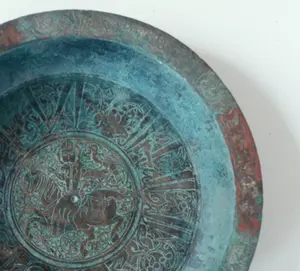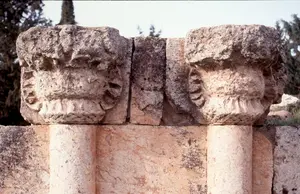Islamic Art History in Germany
During the early modern period, art and material culture of the “Orient” became a topic of interest when contacts between cultures oscillated between political confrontation and mutual benefit from economic exchange. As a parallel with European art history, but under the auspices of colonialism and orientalism, a connoisseurship of non-European art originated, which was first focused on East Asia (porcelain was of particular interest), but in some segments of material culture (e. g. carpets) extended to the Islamic World. In the 19th century, “exotic” works presented on universal exhibitions were characteristic of an “Orientalist” notion of Islamic art and culture, seen through European eyes.
A different attitude became visible in the exhibition “Masterpieces of Muhammadan Art” (Meisterwerke muhammedanischer Kunst), held in Munich in 1910: A professional occupation with Islamic art had already begun, founded on art historical and archaeological methods. It was carried by various public, private and academic institutions. Already in the 19th century, the „Comité de Conservation des monuments de l’art arabe“ had been founded in Cairo, charged with the conservation and restoration of Islamic monuments in Egypt, and therefore also interested in research. Between 1911 and 1914, Islamic Archaeology made its start with the excavations in Samarra (Iraq), capital of the caliphs during the 9th century CE.
In the process of research on Islamic art, scholars from German-speaking countries took a significant part. With the foundation of the Islamic department in the Berlin museums in 1904, under the direction of Friedrich Sarre, Islamic art was professionally established in Germany. At the University of Vienna, Josef Strzygowski promoted Islamic art as a relevant field. From these beginnings, pioneers of scholarship on Islamic art history such as Ernst Diez, Ernst Herzfeld, Ernst Kühnel, Katharina Otto-Dorn, Kurt Erdmann, and Richard Ettinghausen started their careers. Also in other European countries, scholarly research on Islamic art and archaeology had begun before and flourished after the first World War, while national and colonial administrations of Near Eastern and North African became active in collecting and preserving works of Islamic art within their respective borders..
The emigration of scholars from Nazi Germany, the Second World War, and the partition of Germany changed the situation drastically. The holdings of the museums in Berlin were divided between east and west. As to East Germany apart from the Pergamon Museum, activities in Oriental Archaeology were concentrated at the University of Halle-Wittenberg. In West Germany, Islamic Art History was represented by teaching positions in Heidelberg and in Hamburg, which were cancelled after some years. From the 1960s onwards, Islamic Art was taught under the auspices of Islamic Studies, of Art History, and of Architectural History; the universities of Bonn and Tübingen and the Technical University of Berlin have to be named first in this context. Archaeological research in the Islamic World was conducted by the German Archaeological Institute with its departments in Istanbul, Cairo, Madrid and Teheran, with branches in Bagdad, Damascus and Sanaa. The only institution specialized in Islamic Art and Archaeology in West Germany was the Museum für Islamische Kunst in Berlin-Dahlem. Besides, there were curatorial positions in the anthropological museums of Stuttgart and Munich.
In the wake of German re-unification, the Museums of Islamic Art in Berlin were re-united in the Pergamon Museum. Subsequently, History of Islamic Art and Islamic Archaeology were established at German universities: At the Ludwig-Maximilians University of Munich, a position in Islamic and Jewish Art of the Mediterranean was created, on which Avinoam Shalem worked between 2002 and 2013. On a professorship in Mamluk Studies at the University of Bonn, Bethany Walker was appointed in 2013, with her specialisation in Islamic archaeology. The institute of Art History at the FU Berlin devoted a professorship to Islamic Cultures, held by Wendy Shaw since 2014.
In Bamberg, a guest professorship in Islamic Art and Archaeology was established in 1988; it was turned into a permanent position in 1996, at which time Barbara Finster was appointed, followed by Lorenz Korn in 2003.
As an academic society, the Ernst-Herzfeld-Gesellschaft für Islamische Kunstgeschichte und Archäologie was founded in Bamberg in 2005, with Barbara Finster the first president. The annual colloquia of the society have developed to an international forum of Islamic Art and Archaeology.


